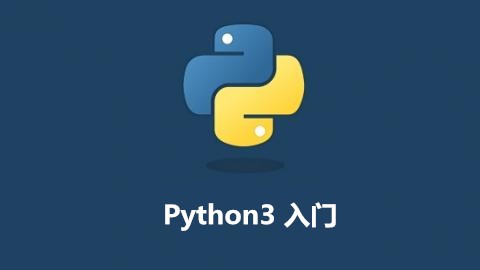课程介绍
课程名称:Python3入门机器学习 经典算法与应用 入行人工智能
课程章节:5-5;5-6;5-7
主讲老师:liuyubobobo
内容导读
- 第一部分 衡量线性回归准确性的四种办法
- 第二部分 多元线性回归和正规方程解
- 第三部分 代码展示
课程详细
- 第一部分 衡量线性回归准确性的四种办法
- 1.MSE均方误差,一分之m乘y的预测值-y的实际值的平方的和
- 2.RMSR均方根误差,根号一分之m乘y的预测值-y的实际值的平方的和 加了个根号有时候用于排除平方根的影响
- 3.MSE平均绝对误差,一分之m乘y的预测值-y的实际值的绝对值的和
这节要用引入一个实际的数据,分别用三种方法实现对预测数据准确性的衡量
#引入机器学习包中的波士顿房价信息,并只使用一个特征
import numpy as np
import matplotlib.pyplot as plt
from sklearn import datasets
boston = datasets.load_boston()
x = boston.data[:,5]#这里只使用房间数量的特征
print(type(x.ndim))
y = boston.target
plt.scatter(x,y)
plt.show()
#从图中可以看到最上面有一些数据很奇怪,这就是真实的数据,比如计量仪器的上线,
#问卷调查勾选的限制等等

np.max(y)
#从这里可以看出确实是最大是50
#为了排除异常点的干扰,可以重新定义数据
x = x[y < 50.0]
y = y[y < 50.0]
plt.scatter(x,y)
plt.show()

#拆分波士顿房价数据
from nike.model_selection import train_test_split
x_train, x_test, y_train, y_test = train_test_split(x, y, train_ratio=0.8, seed=666)
#调用自己编写的单个线性回归特征进行预测并展示
from nike.SimpleLinearRegression import SimpleLinearRegression2
reg2 = SimpleLinearRegression2()
reg2.fit(x_train, y_train)
y_predict = reg2.predict(x_test)
plt.scatter(x_train, y_train)
plt.plot(x_test, y_predict,color="red")
plt.show()

那么接下来就是使用哪几种方法来衡量数据
MSE
mse_test = np.sum((y_test - y_predict) ** 2) / len(y_test)
mse_test
#28.418315342489713
RMSE
from math import sqrt
rmse_test = sqrt(np.sum((y_test - y_predict) ** 2) / len(y_test))
rmse_test
#5.330883167214389
MAE
mae_test = np.sum(np.absolute(y_test - y_predict)) / len(y_test)
mae_test
#3.8540656979860923
封装代码并调用
from nike.metrics import mse_error
from nike.metrics import rmse_error
from nike.metrics import mae_error
mse_error(y_test,y_predict)
#28.418315342489713
rmse_error(y_test,y_predict)
#5.330883167214389
mae_error(y_test,y_predict)
#3.8540656979860923
sklearn 中调用MSE和MAE
from sklearn.metrics import mean_squared_error
from sklearn.metrics import mean_absolute_error
mean_squared_error(y_test,y_predict)
#28.418315342489713
mean_absolute_error(y_test,y_predict)
3.8540656979860923
R Squared
上一节,学习了三种评价线性回归的评价方法,但sklearn中采用的是R Squared,这节就要着重学习这种评价方式
分类问题判断准确度的方式很简单,1就是好(真值与预测值相同),0就是差(真值与预测值不同),然后看看0有多少个
但是线性回归不大一样,
#核心代码
1 - mean_squared_error(y_test, y_predict) / np.var(y_test)
#调用自己写的代码获得r2
from nike.metrics import r2_score
r2_score(y_test, y_predict)
#调用sklearn获得r2
from sklearn.metrics import r2_score
r2_score(y_test,y_predict)
- 第二部分 多元线性回归和正规方程解
多元线性回归就是,x拥有多个特征量,多元线性回归更加符合实际情况
#导入包
import numpy as np
import matplotlib.pyplot as plt
from sklearn import datasets
#导入波士顿房价信息
boston = datasets.load_boston()
X = boston.data
y = boston.target
X = X[y < 50]
y = y[y < 50]
#进行数据切割
from nike.model_selection import train_test_split
# X = np.arange(100).reshape(20, 5)
# y = np.random.randint(0,10,20).reshape(-1,1)
X_train, X_test, y_train, y_test = train_test_split(X, y,train_ratio=0.8,seed=666)
#导入自己写的函数,拟合参数
# from nike.LinearRegression import LinearRegression
%run nike\LinearRegression.py
reg = LinearRegression()
reg.fit_normal(X_train, y_train)
#计算线性回归最优解的S2准确度
reg.score(X_test, y_test)
#0.7788559306186865
- 第三部分 代码展示
四种线性回归准确率检测代码的编写
def mse_error(y_true, y_predict):
"""计算真实值与预测值之间的MSE的误差"""
assert len(y_true) == len(y_predict),\
'the size of y_test must be equal to size of the y_predict'
return np.sum((y_true - y_predict) ** 2) / len(y_true)
def rmse_error(y_true, y_predict):
"""计算真实值与预测值之间的MSE的误差"""
assert len(y_true) == len(y_predict),\
'the size of y_test must be equal to size of the y_predict'
return sqrt(np.sum((y_true - y_predict) ** 2) / len(y_true))
def mae_error(y_true, y_predict):
"""计算真实值与预测值之间的MSE的误差"""
assert len(y_true) == len(y_predict),\
'the size of y_test must be equal to size of the y_predict'
return np.sum(np.absolute(y_true - y_predict)) / len(y_true)
def r2_score(y_true, y_predict):
assert len(y_true) == len(y_predict), \
'the size of y_test must be equal to size of the y_predict'
return 1 - mse_error(y_true, y_predict) / np.var(y_true)
线性回归正规方程解的代码编写
class LinearRegression:
def __init__(self):
"""初始化多元线性回归模型"""
#初始化截距coef_和系数interception_,和theta私有化参数
self.coef_ = None
self.intercept_ = None
self._theta = None
def fit_normal(self, X_train ,y_train):
assert X_train.shape[0] ==y_train.shape[0],\
"the size of X_train must be equal to the size of y_train"
#ones(多少个,0or1行和列)
X_b = np.concatenate(([np.ones((len(X_train), 1)), X_train]), axis=1)
self._theta = np.linalg.pinv(X_b.T.dot(X_b)).dot(X_b.T).dot(y_train)
self.intercept_ = self._theta[0]
self.coef_ = self._theta[1:]
return self
def predict(self,X_predict):
assert self.intercept_ is not None and self.coef_ is not None,\
'must fit before predict'
assert X_predict.shape[1] == len(self.coef_),\
'the feature number of X_predict must be equal to X_train'
X_b = np.concatenate([np.ones((X_predict.shape[0],1)),X_predict], axis=1)
return X_b.dot(self._theta)
def score(self, X_test, y_test):
y_predict = self.predict(X_test)
return r2_score(y_test, y_predict)
def __repr__(self):
return "LinearRegression()"
课程思考
线性回归似乎准确率还有待提高,想必是用别的曲线有机会得到更好的准确度 多特征并且特征与实际数据有相关的话,能很大的提高准确率,比如前一个只使用一个特征的线性回归函数使用S2的准确率提高了不少,这说明数据准确,且相关对准确率的计算很重要
课程截图


 随时随地看视频
随时随地看视频




